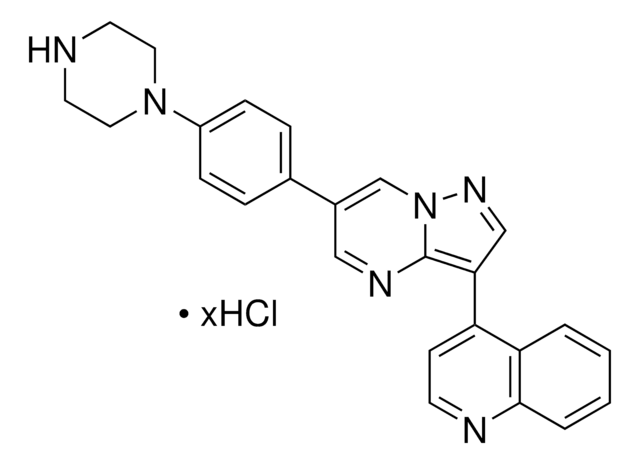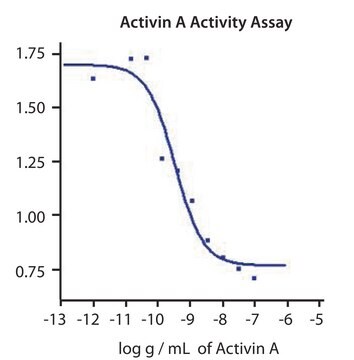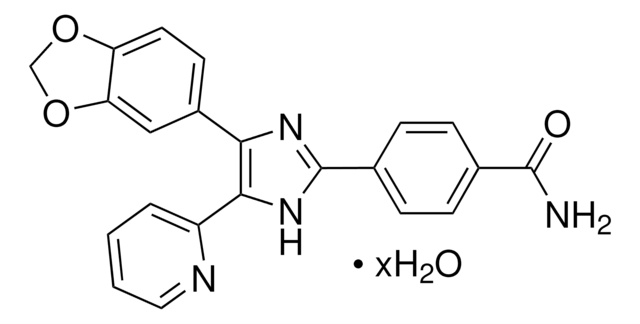B2680
BMP4, human
>95% (SDS-PAGE), recombinant, expressed in NSO cells, lyophilized powder, suitable for cell culture
Synonym(s):
BMP-4
About This Item
Recommended Products
product name
Bone Morphogenetic Protein 4 human, >95% (SDS-PAGE), recombinant, expressed in NSO cells, lyophilized powder, suitable for cell culture
biological source
human
Quality Level
recombinant
expressed in NSO cells
assay
>95% (SDS-PAGE)
form
lyophilized powder
potency
10-30 ng/mL ED50
mol wt
monomer calculated mol wt 13 kDa
~22 kDa by SDS-PAGE
packaging
pkg of 10 μg
storage condition
avoid repeated freeze/thaw cycles (Do not store in a frost-free freezer.)
technique(s)
cell culture | mammalian: suitable
impurities
<1 EU/mg Endotoxin level (LAL test)
UniProt accession no.
storage temp.
−20°C
Gene Information
human ... BMP4(652)
Looking for similar products? Visit Product Comparison Guide
Biochem/physiol Actions
Physical form
Analysis Note
Storage Class
11 - Combustible Solids
wgk_germany
WGK 3
flash_point_f
Not applicable
flash_point_c
Not applicable
Certificates of Analysis (COA)
Search for Certificates of Analysis (COA) by entering the products Lot/Batch Number. Lot and Batch Numbers can be found on a product’s label following the words ‘Lot’ or ‘Batch’.
Already Own This Product?
Find documentation for the products that you have recently purchased in the Document Library.
Customers Also Viewed
Articles
Cancer stem cell media, spheroid plates and cancer stem cell markers to culture and characterize CSC populations.
Our team of scientists has experience in all areas of research including Life Science, Material Science, Chemical Synthesis, Chromatography, Analytical and many others.
Contact Technical Service






